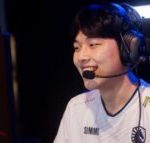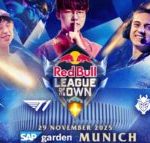Look Sports Media – Following the announcement of the Esports National Cup, speculation ran rampant about each nation’s optimal Counter-Strike 2 roster. For Mongolia, the answer was clear: The MongolZ, a national team defying international norms, emerged as the obvious choice. Online pundits overwhelmingly favored Mongolia, citing their exceptional teamwork and synergy. This prediction holds despite the significant population disparity; Mongolia boasts a mere 3.5 million residents compared to potential rivals like Russia or France. However, Mongolia’s unique culture and The MongolZ’s remarkable success suggest a potential parallel to New Zealand’s dominance in rugby—consistently exceeding expectations despite a smaller talent pool. Could Mongolia become CS2’s New Zealand?
New Zealand, with a population of 5.3 million, is dwarfed by regional rivals Australia (28 million), South Africa (63 million), and Argentina (47 million). Yet, the All Blacks reign supreme in the Rugby Championship, claiming the title 20 out of 29 times since 1996. While South Africa holds more Rugby World Cup titles, no nation is as synonymous with rugby as New Zealand. The All Blacks are a national brand, drawing massive crowds worldwide. Their success stems from a deep-rooted rugby culture, fostering talent from a young age.

In Mongolia, esports stars may be forging a similar national identity. While Bokh (Mongolian wrestling) and football are national sports, neither enjoys the global recognition of Counter-Strike within Mongolia. Esports Charts reported a peak viewership of 179,637 for a Mongolian Counter-Strike event—over 5% of the population. Imagine the UK mirroring that ratio; 13.8 million viewers. This doesn’t account for massive public viewings, with social media ablaze with celebrations following The MongolZ’s victory at the EWC, defeating betting favorites Vitality.

Related Post
The MongolZ’s fame transcends the screen; players grace billboards and advertisements, and even the Prime Minister celebrated their EWC win. This level of national recognition is unprecedented in this remote region. The team’s success is amplified by Mongolia’s unique LAN culture, particularly in Ulaanbaatar, where internet cafes fostered competitive gaming long before the esports boom. This environment provides a fertile ground for talent, turning Counter-Strike into a viable career path.
The MongolZ’s journey exemplifies this growth. While their initial IHC qualification for Antwerp 2022 was exciting, many doubted their potential. However, the team has continuously improved, adding young talent like 17-year-old Azbayar "Senzu" Munkhbold in 2023. The MongolZ organization’s growing prize money and sponsorships further bolster their ability to identify and support emerging talent, formalized with the June launch of the MongolZ Academy. This academy bridges the gap between local competition and Tier 1 Counter-Strike, providing crucial coaching and support.
Counter-Strike might not be Mongolia’s most popular sport yet, but it has the potential to surpass traditional sports in national significance, a feat unseen elsewhere. While South Korea has a strong esports culture, it remains overshadowed by baseball and Taekwondo. The MongolZ, however, uniquely represent Mongolia on the global stage, inspiring future generations and providing a framework for aspiring Counter-Strike professionals. Their story is a testament to the power of national pride, a thriving esports culture, and a team determined to defy all odds.
Darragh Harbinson, Senior Editor
Darragh Harbinson is an esports writer specializing in Counter-Strike. He has written for looksports.media, Esports Insider, UKCSGO, Dexerto, and Rush B Media.










Leave a Comment